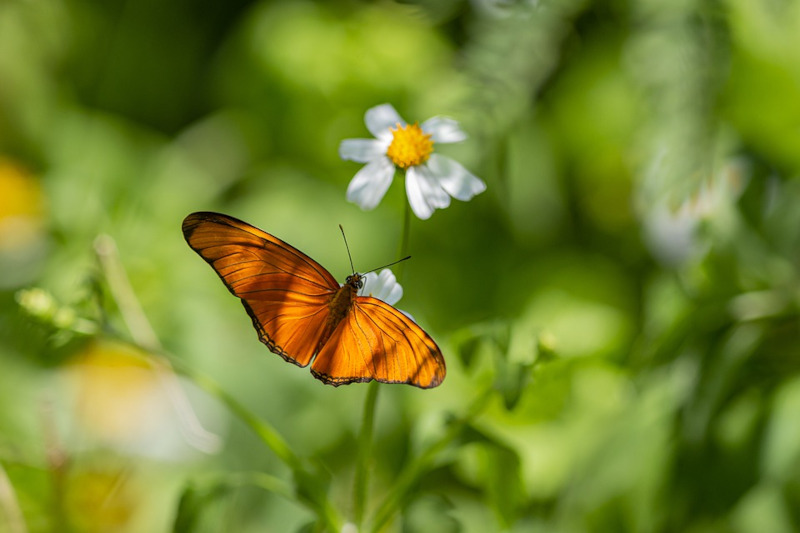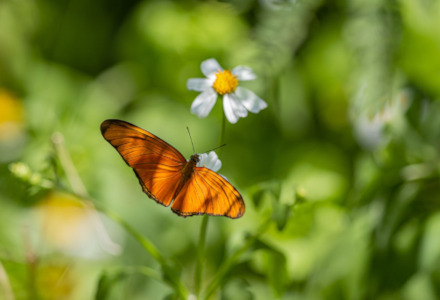
Public Domain Image
The Julia Heliconian is a beautiful species of brush-footed butterfly. They are at present the only known extant member of their genus. Scientists have, however, identified 15 known sub-species.
The Julia Heliconian remains a widely distributed insect which is also neotropical in nature. The northern edge of their primary range includes the southern tips of Texas and Florida, in the United States, in North America. The southern edge extends as far south as southern South America. Their northern migrations may occasionally take them all the way up to the state of Nebraska.
Public Domain Image
Julia Heliconian Physical Characteristics
The Julia Heliconian generally attains an average wingspan of around 3.6 in (9.1 cm). Their coloring is predominantly a bright orange. The males are typically a much brighter orange than the females. There are also usually black markings on each wing.
Among butterflies, this butterfly is a comparatively rapid flier. They are also generally much more active than other butterflies. These factors have made them popular insects to raise in butterfly houses.
Their lifespan is greater than most butterfly species.
Public Domain Image
Julia Heliconian Diet and Habitat
First, the Julia Heliconian prefers warm, sunny habitats which include forest clearings, open woodlands, and the boundary zone between forests and fields. In their caterpillar stage, they feed principally upon several varieties of passion flower.
Then, the adults move on to the nectar of flowers and vining plants. They also have one extremely unique dietary trait: they will actually irritate the eyes of certain animals, and then feed upon their tears.
Julia Heliconian butterfly likes irritating the eyes of certain animals, and then feeds upon their tears. Click To TweetLast, the butterfly has few natural predators since they possess certain chemicals in their wings which make them unpalatable to most birds.
Check out our articles on Question Mark Butterfly, Karner Blue Butterfly, Ornithoptera Chimaera, Regal Moth

